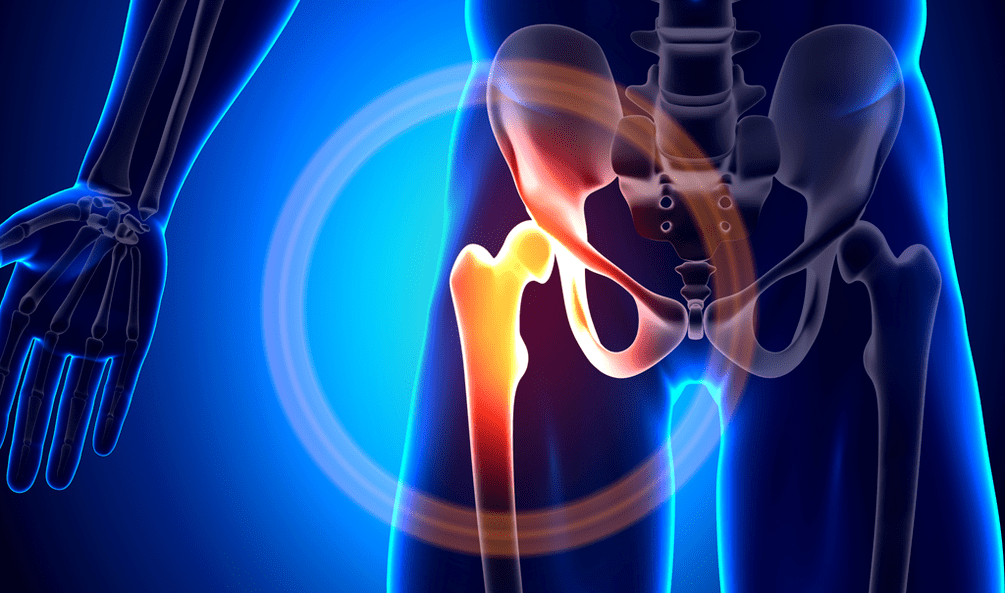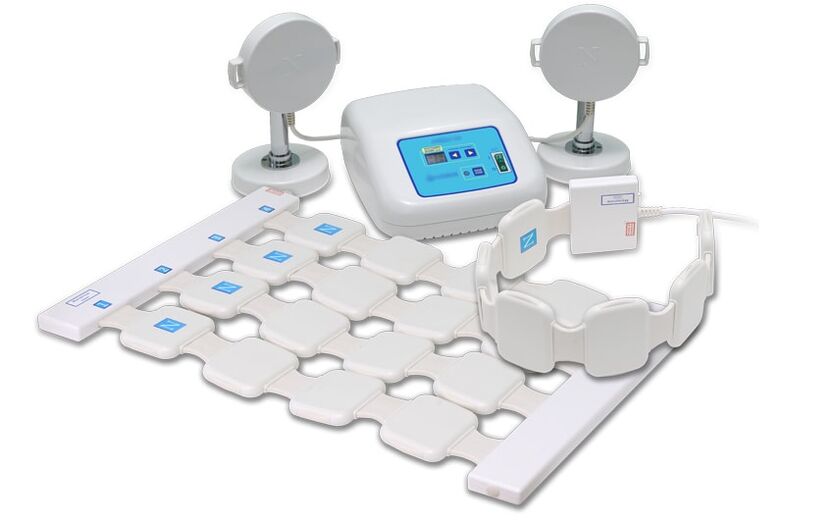What is this disease with such a complicated name - coxarthrosis? This disease is deformable arthrosis of the femoral joint and is often also referred to as osteoarthritis of the femur.
Coxarthrosis is currently the leading disease of the musculoskeletal system, which is degenerative-dystrophic. There are many causes for coxarthrosis and in this regard the disease has spread to all age groups.

Coxarthrosis refers to osteoarthritis of a non-inflammatory nature, in which degenerative-dystrophic changes initially occur in the cartilage of the femoral joint, which emphasizes the surfaces of the articular bones, and in later stages bone changes are already occurring. Directly. During such a gradual course of the disease with coxarthrosis, consequently, the normal functions of the affected femoral joint are disrupted, which eventually leads to disruption of the functions of the musculoskeletal system of the patient. Throughout.
For the most part, osteoarthritis of the hip joint affects people over the age of forty. Of course, coxarthrosis, like other diseases, is successfully treated without surgery, but only at an early stage. But in its later stages it will hardly be possible without surgery and only one thing will help you to avoid disability - prosthetics of the joint affected by coxarthrosis. Unfortunately, people with coxarthrosis who do not pay attention to minor femoral pain in the early stages of the disease avoid going to the doctor, while osteoarthritis of the femur, meanwhile, continues to progress day by day, gradually turning into. More advanced form.
How does coxarthrosis develop?
Consider the mechanism of development of the disease coxarthrosis. And let's start with the fact that the thigh joint consists of two bones:
- The end of the thigh itself, ball-like;
- Acetabulum, similar to a small billiard pocket located at the pelvic floor;
- Special articular cartilage on both bone surfaces, in the form of a cloud-like substance and in the form of a shock absorber, compressing in motion and straightening in its absence;
- As well as the ligaments that form the femoral joint cavity itself and thus form the joint capsule.
Around the joint, in addition, there is muscular tissue such as the thigh, gluteal and other muscles, the functioning of which also depends on the condition of the thigh joint.
During movement, when the articular cartilage is compressed, a specific fluid is "absorbed" from it into the joint, which is a kind of lubricant for the articulated bones in the joint.
The onset of the disease with coxarthrosis is primarily due to the disruption of the cartilage nutrition of the femoral joint. The cartilage thins and then disappears in some places. If no measures are taken to stop this process, then in the areas where the cartilage atrophy described above occurs, the bone itself will grow directly, thus trying to "fill" the resulting gap in the joint cavity. As a result of such changes in the bone, osteophytes, or "spikes" on the bone, begin. These deformities, in turn, lead to disruption of the congruence of the bones articulated in the femur and further "abrasion" of the remaining healthy areas of the articular cartilage.
Causes of osteoarthritis of the femoral joint
The causes of coxarthrosis, in which it occurs, can be divided into primary, of unknown etiology, and secondarily, as a result of other diseases, for example, such as:
- Thigh dislocation that is congenital;
- Thigh dysplasia;
- Aseptic necrosis of the femoral head itself;
- Has previously suffered from a variety of injuries such as a fractured neck fracture;
- Perthes disease;
- Inflammatory processes in the femoral joint;
Since coxarthrosis occurs not only in one but in both thigh joints at the same time, it is quite possible to argue that bilateral coxarthrosis is not uncommon. Although primary coxarthrosis often affects the knee joint or spine.
Symptoms of coxarthrosis
The very first symptoms of coxarthrosis directly depend on the degree of damage to the femoral joint, as well as the stage of development of this disease, and the main:
- Pain that manifests itself during movement in the thigh joint and disappears at rest;
- Emerging lameness;
- Firmness that arose in the hip joint;
- Descending progress in the range of motion of the thigh;
- Weakness of the thigh muscles and a noticeable reduction in their volume.
We will discuss the symptoms of coxarthrosis separately, depending on the degree of the disease:
- Symptoms of grade 1 coxarthrosis: There is moderate pain in the femoral joint and only after the joint has been subjected to intense load for a long time. After lifting the load and resting, this syndrome stops completely. During the first degree symptoms of coxarthrosis, walking remains normal and the range of motion of the joint does not change.
- Symptoms of grade 2 coxarthrosis: Pain in the femoral joint is already felt more intense than in the first degree, but in addition, they are projected in the groin area. Given the atrophy of the developed muscles, the knee also begins to ache and often more so than the femur itself. Sometimes, with symptoms of second-degree coxarthrosis, the pain begins even at rest, after a load has been placed on the injured joint, a fairly long rest is needed to relieve it. Lameness begins with jogging or long walks. At the same time, the strength of the thigh muscles is quite reduced and the range of motion of the joint is also not evaluated.
- Symptoms of grade 3 coxarthrosis: Constant pain in the hip joint that does not go away after an extremely long rest or constant rest, even at night. The pain had already covered the entire leg. Against the background of pain the patient develops insomnia and various sleep disorders. Strong atrophy of the muscles of the thighs, buttocks and lower legs is observed, while the motor volume of the joint is almost minimal. While walking, the patient is forced to turn to assistive devices for movement, such as, for example, a cane.
If such arthrosis of the hip joint develops in only one leg of the thigh joint, then its weakened thigh muscles push the development of lateral displacement of the pelvis, resulting in the length of the leg being damaged at the joint. Coxarthrosis is reduced.
Diagnosis of coxarthrosis
When diagnosing coxarthrosis, the symptoms of coxarthrosis described above must be taken into account together with the data obtained as a result of X-ray examination of the patient. This technique makes it possible to determine not only the degree of coxarthrosis, but also to identify the causes that served as a catalyst for the development of coxarthrosis. Radiography provides an excellent opportunity to identify changes that have specifically caused damage to the femoral joint, which is directly related to the mechanism of coxarthrosis development.
In addition to the diagnostic methods already listed, the methods of computed tomography and magnetic resonance imaging can also be used, which allows a thorough detailed study of developmental pathology, such as, for example, the structure of bone tissue, which is deformed. Is a companion of this disease. As for magnetic resonance imaging, this method still allows the assessment of pathological disorders experienced by the soft tissues surrounding the joint affected by coxarthrosis.
Treatment of coxarthrosis
The choice of treatment method for coxarthrosis directly depends on the symptoms of coxarthrosis and its stage. Usually, first- and second-degree coxarthrosis is treated with traditional conservative drug therapy, which consists of chondroprotectors, vasodilators, and, if indicated, muscle relaxants. Nonsteroidal anti-inflammatory drugs are also used during periods when coxarthrosis is particularly acute. It should be noted that such treatment should be carried out by a specialist doctor, since self-medication, unlike traditional medicine, can have an extremely negative impact on the patient's internal organs and completely inhibit the ability to restore hyaline cartilage.

Also, various physiotherapy procedures and exercise therapy are prescribed for coxarthrosis. It is especially effective to use magnetotherapy in combination with traditional medical treatment of coxarthrosis to treat osteoarthritis using a special device.
The effects on the body of a patient with coxarthrosis during the diet have no direct therapeutic effect, but it is recommended for obese people to reduce body weight as this makes it possible to reduce the load on the injured joint, thus alleviating the acute symptoms of coxarthrosis.
As for the third degree of coxarthrosis, the symptoms of which are the most painful, treatment as such is carried out only by surgical intervention, for example, hip arthroplasty. Statistics show that after surgery, absolute recovery of limb function with deformed arthrosis of the femoral joint is achieved in 95% of cases, which makes it possible to lead a fairly active lifestyle in the future.
The lifespan of such a prosthesis is about 15-20 years, but at the end of its service life, a second operation is needed to replace the worn endoprosthesis.
ᲨNote,This is important! Do not diagnose yourself!If symptoms of coxarthrosis appear, you should consult an orthopedic doctor, as only a qualified specialist can make the correct diagnosis and prescribe the most optimal treatment.
Prevention of coxarthrosis
Coxarthrosis can be prevented if the necessary prevention of coxarthrosis is carried out:
- Mandatory and timely treatment of inflammatory diseases of the joints;
- Timely treatment of joint dysplasia;
- Mandatory correct and reasonable physical activity, especially weight training, which must be performed correctly;
- Mandatory control of your body weight, maintaining it normally;
- Prevention of joint damage.































